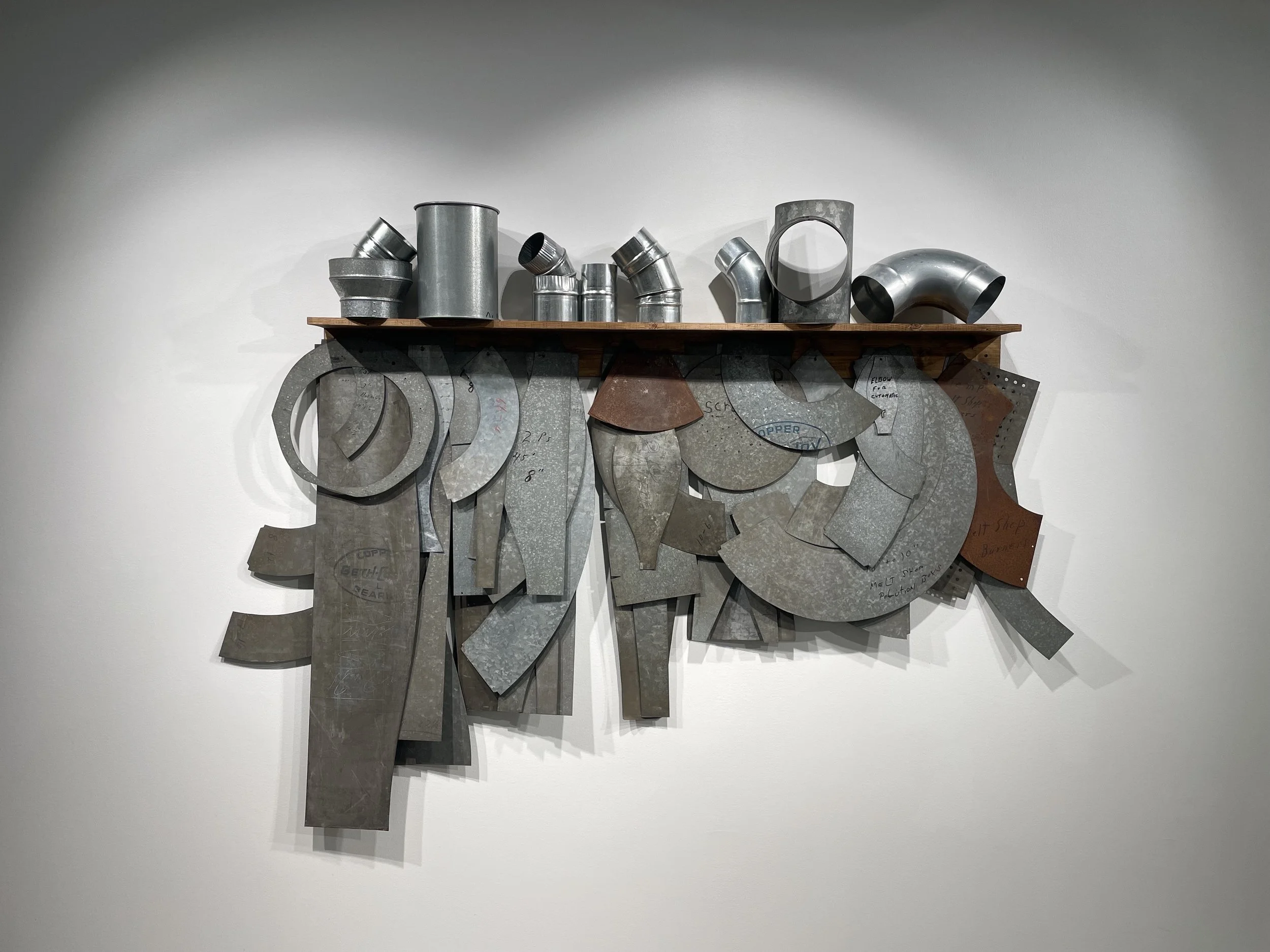Shouldering the Outmoded
While a majority of Emily’s recent work has been about the rise and fall of the U.S. steel industry, this exhibition focuses specifically on the remains of Allegheny- Ludlum Technologies Specialty Steel Corporation (AL Tech) in Watervliet, New York.
The work in this exhibition stems from stumbling upon an abandoned, bankrupt steel mill in 2019. Ten subsequent visits later, the former superfund site of AL Tech has since been demolished. Many objects in this show were carried out by the artist, saved from the fate of the landfill, archives just months away from being lost forever. An eyesore to the locals, this site held stories of burgeoning new technologies, home to the leader of stainless steel production in the United States at one time. Stepping onto the grounds felt like time travel, and this work is an attempt to catalog the whirling essence of the machine shop before it stepped aside, ushering in a new automated nation.
Rowan College of South Jersey Gallery, Millville, NJ
Working at Rowan University in Glassboro, New Jersey, from August 2020 - July 2022 also had an impact on Emily, as many of the works made in the show were created there. The handles were cast from the mill and metal bandsaw, and the 3D scans draped over them were also captured from equipment at Rowan. The aim was to extract their essence — curious about who might be able to identify the machine solely based on fragmented imagery. These works focus on moments of touch found in machinery, mirroring a kaleidoscopic circular motion present throughout fabrication processes— this is where the human still fits in.
The use of 3D scanning in this show further stresses the dichotomy between traditional sculptural practices and digital fabrication, of which heavily altered the course of production, virtually removing the laborer from the floor entirely. The work is meant to honor our industrial past while also actively questioning its future, thereby connecting us to the materials that enhance our lives and to the places and people that produce them.
Hydra Handle and Cosmo Crank, cast iron, digital print on ripstop, abrasive disks, 2021










































